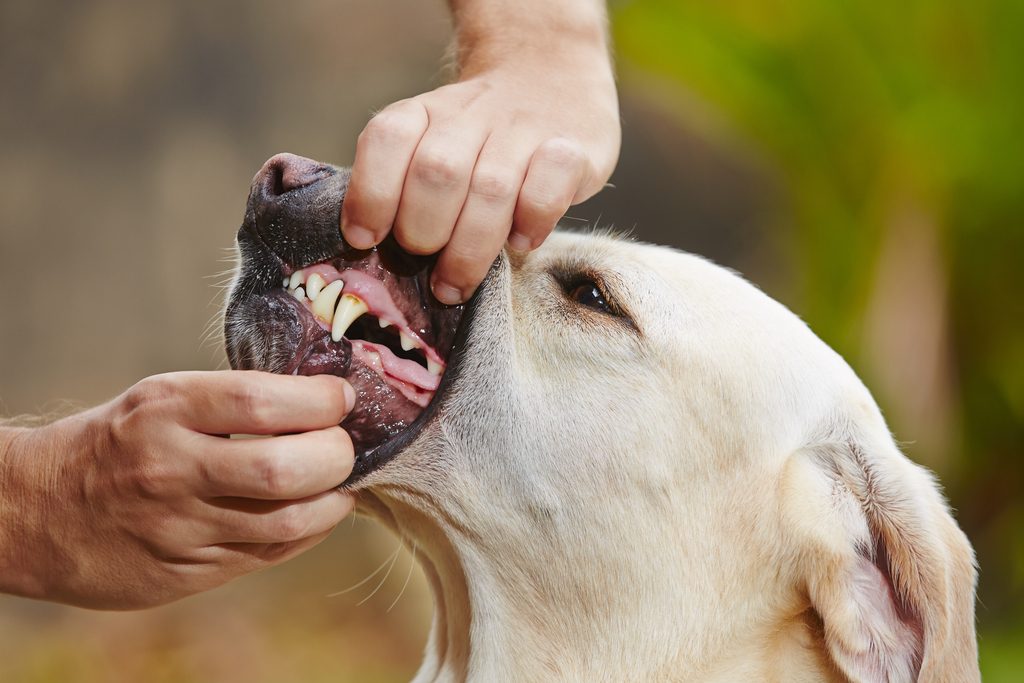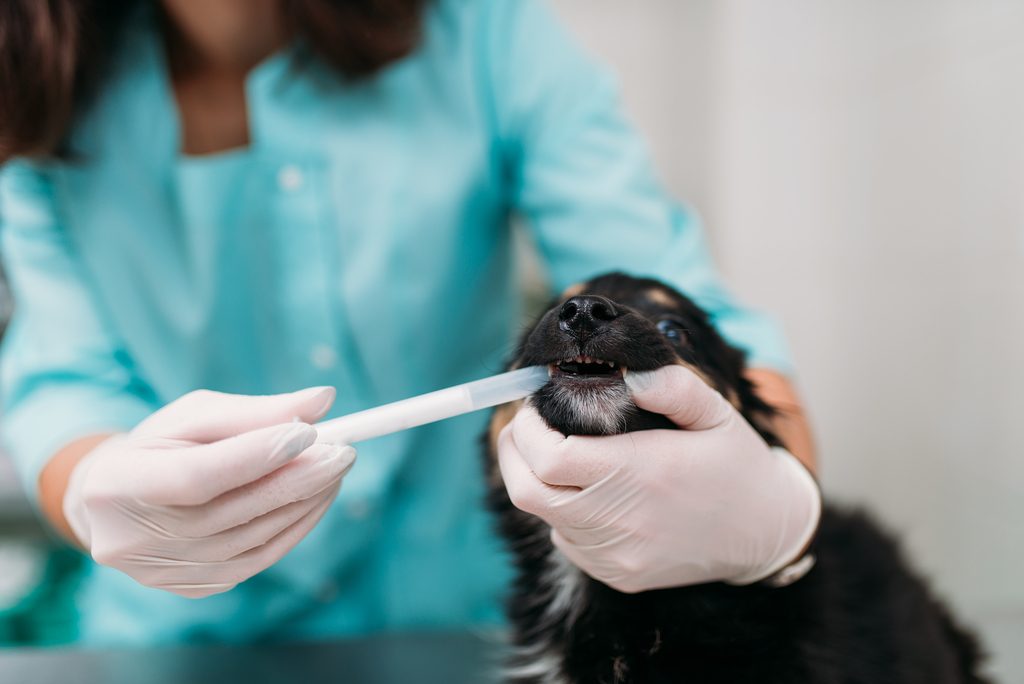According to the Australian Dental Society, over 80% of dogs and 70% of cats develop gum disease by the age of three. Periodontal disease is the most common disease in companion animals.
Most dogs and cats have some level of periodontal disease. This is staggering given that it’s totally preventable and can easily be managed by regular trips to your veterinarian.

Why is dental disease not obvious and often overlooked?
The reason is simple: We don’t spend a great deal of time looking in our pet’s mouth, and when we do we’re not always sure of what to look for. Added to this, dental disease it is not always evident to the naked eye. Often the disease is hidden under the gum margins out of sight and easily missed by owners.
How does it occur?
Bacteria live in all animal and human mouths, and they are there for a number of very important reasons. Sometimes, however, they can cause disease. Bacteria produce a substance known as plaque that sticks to the surface of the teeth. Minerals in saliva are laid over the top, which causes the plaque to harden and form calculus, or tartar which is the hard, visible substance stuck to the teeth.
What causes disease?
Once plaque is laid down and tartar forms it can spread under the gum margin where bacteria in the sub-gingival space damage the ligaments and structures that hold the tooth in place. The immune system is also triggered and further adds to the problem. Gums will become red or inflamed and the tooth will start to become loose. The tooth at this point often needs to be removed.
Who can perform animal dentals?
Just like with human dentists, it’s an area that requires training and special equipment. You wouldn’t go to your hairdresser to have your teeth checked so why take your pet to a groomer, or other non-qualified individual. Your veterinary surgeon is the ONLY person who should be examining, or performing any procedure on your pet’s teeth.

Firstly, they will need to examine the entire mouth visually which requires your pet to be under a general anesthetic to be done properly. Then they use a probe down each tooth socket to check for any detached gums, or hidden disease. A human scaler is used to clean under the gums as well as the visible section of tooth, any diseased teeth are also removed. Veterinarians may also x-ray the mouth to check the health of bone and ligaments that are not visible to the naked eye. Any hidden disease that will cause issues in the near future is also addressed.
Once the mouth is clean your vet will start you on a home care routine. Although the teeth will now be clean, they will return to their previous condition if the disease is not managed long-term.
What are the side effects of dental disease?
Not only can dental disease be unsightly, it is more than likely painful. Red gums, also known as gingivitis, cause pain and loose teeth, as many people will know are extremely painful and can cause pets to be quieter and not want to eat. Most pets with dental disease often show no signs at all which is why it’s so easy for their owners to overlook the condition.
Human studies have linked periodontal disease to many health issues including heart disease, septicaemia and diabetes. Veterinarians are seeing the same side effects in dogs and cats. Vets can also see a hole between the oral cavity to the nasal passages called a fistula. Jaws can also become fractured due the bone becoming weak, or being infected. This is called osteomyelititis.
It is imperative to keep your pet’s mouth as healthy as possible.
What should you do if your pet has dental disease?
Book a trip into your veterinarian and discuss performing a dental scale and polish. They will remove any diseased teeth and your pet will come home with a perfectly clean mouth. But beware that it may not last long.
How to manage and prevent dental disease at home?
Chewing, saliva, bacteria health, together with correct mouth pH all play a key role to keeping teeth clean. The easiest way to keep them clean is by feeding an ultra premium dry food such as LifeWise. If your pet has dental disease then going on to expensive prescription products may help to reduce further progression of the disease.
Toys such as KONG Dental and Petstages’ Dogwood Durable Stick will also help. Chews, such as Greenies and treats such as Vitalitae Jerky may be given to encourage daily chewing. This will activate the jaw muscles as well as keep plaque and tartar off the teeth and below the gum margins.

You can also brush your pet’s teeth daily and there are some great videos on YouTube which explain how to do this effectively. Use a pet tooth brush and animal tooth paste, such as Vet’s Best Complete Dental Kit.
Do not use human tooth paste as it’s not designed to be swallowed. Brushing once per day after a meal will have the most effect on controlling the disease.
Your pets will thank you for keeping them disease and pain free. Happy brushing!
